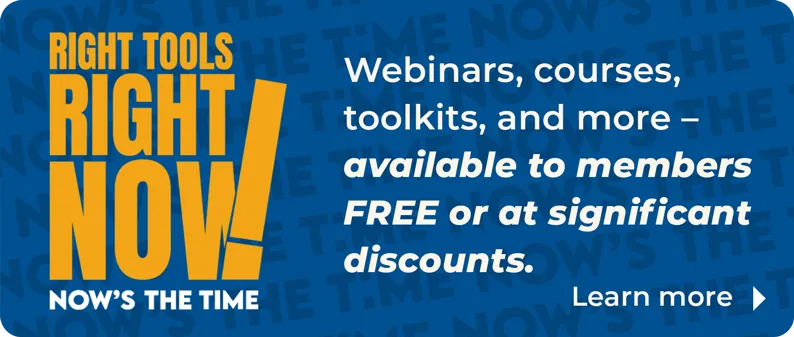
The most valuable asset members have is their market knowledge. The hard part for associations? Getting members to realize it. Market knowledge is what differentiates our members from other real estate agents. It elevates their “game,” it provides true self-confidence (versus “fake it ’til you make it”), it allows them to operate at a higher level, and it increases their income.
This is why providing member education must be an association priority.
However, associations must be careful that members do not perceive us as positioning education as a source of non-dues revenue. If this is the perception (whether or not it is reality), you might get attendance, but you will not produce a great member experience, and you will certainly not generate member respect or loyalty.
Remember, education on its own is not a member benefit. The benefit comes from the results that education provides (and it’s much more than the initials after their name), making members more productive, successful and profitable.
To help members get these results, associations can demonstrate care when preparing a course. Start by asking these questions. Is the course:
- Topically relevant in your market?
- Priced to demonstrate care about affordability and to attract maximum attendance?
- Taught by a recognized expert?
- Providing a complete experience (refreshments, materials, etc.)?
- A quality reflection on you as an organization?
- Designed to include an introduction by an association leader?
Here’s an example:
We deliver a Real Estate Buyer’s Agent Council course for $175 per live attendee, regardless of association membership, with an in-person instructor. The $175 includes course materials, breakfast and lunch, and the course is taught by an out-ofstate, nationally recognized instructor who is a National Association of REALTORS® member.
Some may have seen nearly the same class offered at a higher cost as a virtual-only offering, without breakfast or lunch.
Agents aware of both options may perceive that the former demonstrates care and the latter is a money grab.
Always remember, it is the members we are supposed to serve and support.
A Final Note on Brokerages
Associations should also not compete with brokerages on education. I learned that lesson 24 years ago when our president, my largest broker and good friend, made it clear he was extremely unhappy that associations were providing classes to members using his agents’ dues dollars, effectively discouraging brokerages from creating and offering their own programming. Since then, we have never provided such instruction.
To support brokerages, associations should:
- Know what education your brokerages already provide.
- Provide enough education to make members aware of what they might not know (at no cost).
- Offer risk-reduction content such as antitrust laws (at no cost).
- Teach designation and certification courses that brokerages cannot provide.
- Include NAR branding in instructions or communications to a brokerage when possible.
Remember, while associations aren’t charitable enterprises, they must deliver education as a service to the members, not only as a source of non-dues revenue. They must get to know their brokers, respect the integrity of brokerage businesses and comprehend market conditions.
They should also take care there are no conflicts of interest among those who make the decisions on what is taught, how courses are taught, course pricing and who does the teaching. All of this is why education for members is a delicate balancing act.









